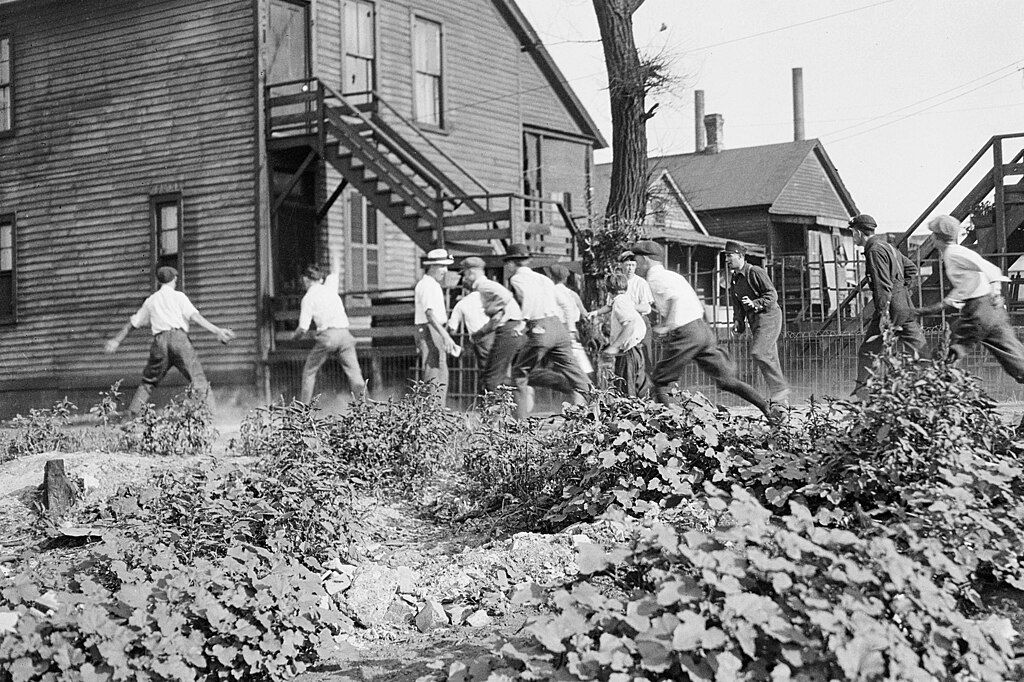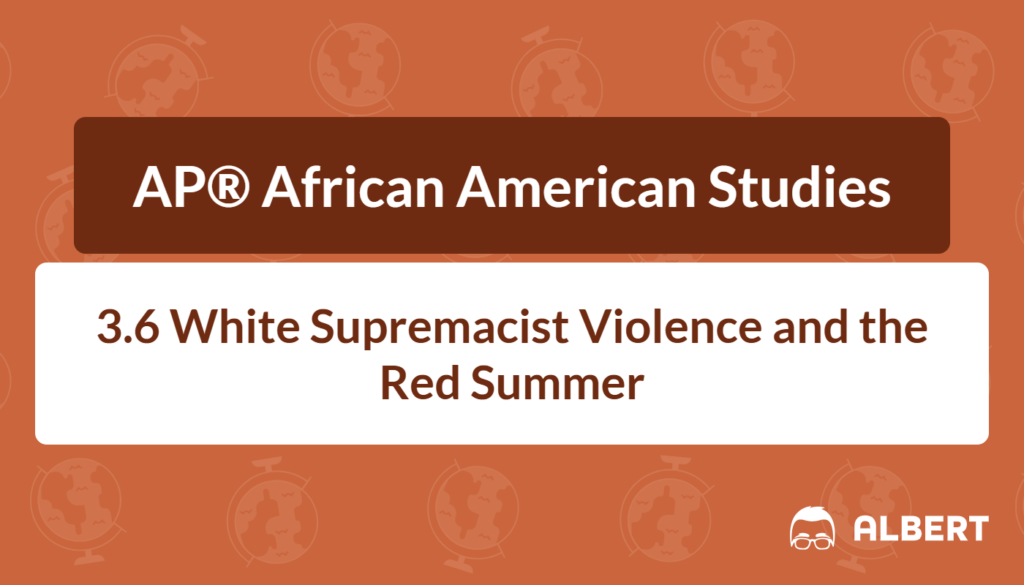What We Review
Understanding White Supremacist Violence and the Red Summer
White supremacist violence in the early 20th century shaped the experiences and futures of countless African Americans. These violent acts included race riots, targeted attacks, and organized assaults on Black communities. One of the most notable periods of unrest, often called the “Red Summer,” highlights how racial tensions boiled over in cities across the United States in 1919. It is essential to study these events in detail to understand current discussions surrounding race, wealth, and fairness in America.
What Was the Red Summer?
The Red Summer refers to the summer of 1919 when dozens of race riots erupted in urban areas across the country. These conflicts resulted from rising tensions between Black and white residents competing for jobs, housing, and social standing. The violence mainly targeted African Americans and was carried out by white mobs fueled by racist beliefs.
One of the most notable incidents occurred in July 1919: the Chicago Race Riot. This conflict began on a Lake Michigan beach when a teenage African American boy was killed after drifting into a whites-only swimming area. When law enforcement failed to take action against the aggressors, anger spread throughout the city. Eventually, widespread violence broke out, leading to over 30 deaths and hundreds of injuries. The event exposed the deep racial divide in Chicago and underscored the need for nationwide change.

Causes of Racial Violence in the Early 20th Century
Multiple factors contributed to the heightened racial violence of the early 1900s. First, returning Black veterans from World War I sought greater respect and opportunities after bravely serving their country overseas. However, discrimination remained intense, which led to disappointment and anger among these veterans. In addition, competition for jobs increased because factory positions were scarce. African Americans had migrated into northern cities, hoping to find better employment. Yet white workers feared losing their roles and responded with hostility.
Next, the global flu pandemic of 1918–1919 added another layer of stress. Many people were economically vulnerable due to illness and job instability, which fueled existing resentment. Therefore, more than 30 urban race riots erupted during the Red Summer of 1919, as tensions between communities led to tragic losses of life and property. Reports from this period showed that racist attitudes often turned ordinary disagreements into life-threatening encounters.
The Tulsa Race Massacre of 1921
Among the worst instances of white supremacist violence was the 1921 Tulsa Race Massacre. Tulsa, Oklahoma, was home to the Greenwood District—an area so prosperous that it was famously called “Black Wall Street.” Greenwood thrived because of its thriving Black-owned businesses, restaurants, and theaters. Residents built a strong local economy where African Americans could sustain each other without the frequent limitations faced in many other cities.
However, white residents grew resentful of Greenwood’s success. Tensions exploded in late May 1921, when a young Black man was accused of assaulting a white woman. Reports suggest that a mix of rumors, sensationalized news stories, and racism sparked a violent white mob. Armed groups then destroyed Greenwood block by block. According to records, more than 1,250 homes and businesses were burned or looted. Many residents lost everything, and official accounts indicate that numerous people lost their lives, although exact numbers are still debated.
The Unfolding of the Tulsa Race Massacre
- A Black teenager was accused of wrongdoing against a white woman in an elevator.
- Local newspapers quickly printed exaggerated headlines, stirring fear and anger.
- Despite attempts by some residents to de-escalate tension, a group of white men gathered outside the courthouse.
- Black community members arrived to protect the teenager from possible lynching, but hostility escalated into gunfire.
- White mobs then invaded Greenwood, destroying businesses, churches, and homes.
- Planes were reported flying overhead, dropping incendiary substances on rooftops.
The damage to property and livelihoods was devastating. Important Black institutions were reduced to ashes, shattering the economic foundation of an entire community. Residents of Greenwood sought to rebuild, but barriers such as biases in insurance claims and government assistance made recovery difficult.
African American Responses to White Supremacist Violence
Faced with threats on many fronts, African Americans developed a variety of responses. Political activism became a powerful tool. Leaders encouraged voter registration campaigns and demanded better representation. Organizations like the National Association for the Advancement of Colored People (NAACP) pressured officials to enforce laws equally. Published journalism—including African American newspapers—highlighted injustices and created a platform for protest.
Armed self-defense also emerged in some communities. Historical records from the Red Summer point out that many veterans used their military training to protect their families and neighbors. Some formed neighborhood patrols using weapons from their wartime service. Such actions, though often risky, sent a message that African Americans would not remain passive in the face of violent attacks.
Notable figures also used their voices to condemn racial terror. One example is Claude McKay, who published the poem “If We Must Die” in 1919. This poem expressed defiance and hope, urging African Americans to stand strong against those who threatened their right to exist with dignity. Although many still lost homes, jobs, and loved ones, these strategies showed that African Americans were determined to advocate for justice.
Legacy of Racial Violence and Economic Impact
Racial violence such as the 1921 Tulsa Race Massacre stalled wealth accumulation in Black families. Tragically, the loss of property meant that African American communities could not pass on businesses or real estate to future generations. The destruction of neighborhoods like Greenwood erased years of labor, investment, and success. Evidence shows that this loss had lasting effects, widening the racial wealth gap over time.
Therefore, many African Americans moved away from regions where violence was most severe, contributing to the Great Migration. Between the 1910s and 1970s, millions of Black residents left the rural South for industrial cities in the North, Midwest, and West. This shift reshaped American demographics and culture. New music scenes, political activism, and artistic expressions blossomed in places such as Chicago, Detroit, and New York. Unfortunately, discrimination followed these migrants, and conflicts erupted in zones where they resettled. The history and legacy of the Red Summer highlight that addressing structural inequality remains essential to ensuring equal opportunities for all.
Conclusion
White supremacist violence in the early 20th century—including the Red Summer and the 1921 Tulsa Race Massacre—is a key chapter in African American history. The impact on families, neighborhoods, and economic progress can still be felt today. A closer look at these events also reveals the courage and determination of African Americans who defended themselves and pursued equal rights. Studying the circumstances that led to these tragedies helps with understanding modern racial dynamics and inspires future work toward a fair and inclusive society.
Exploring Key Historical Sources
It is important to review primary sources to gain a better sense of how events like the Chicago Race Riot and the Tulsa Race Massacre affected real people. The following items shed light on the experiences of African American communities:
- “If We Must Die” by Claude McKay (1919)
- Written during the Red Summer.
- Urges Black communities to resist racist violence with dignity.
- Became a rallying cry for those seeking justice and equity.
- Photograph of the Greenwood District Burning (1921)
- Shows flames and smoke engulfing the prosperous Black Wall Street Tulsa Oklahoma neighborhood.
- Depicts how quickly businesses and homes were destroyed.
- Highlights the ferocity of the Tulsa Race Massacre.
- Photograph of Black Men with Hands Raised (1921)
- Reveals the treatment of innocent residents by white mobs and law enforcement.
- Demonstrates the widespread nature of arrests and forced surrenders.
- Provides direct evidence of racial tensions turning daily life into a battleground.
- Photograph of Destruction in Greenwood After the Tulsa Race Massacre (1921)
- Shows the extent of physical damage, with entire blocks reduced to rubble.
- Reminds viewers of the families and livelihoods lost.
- Emphasizes how entire neighborhoods could be ruined in a matter of hours.
Together, these sources illustrate the human toll of white supremacist violence. They also highlight how African Americans did not simply accept injustice but continued to fight for fair treatment and recognition.
Quick Reference Chart: Key Vocabulary and Definitions
Below is a table summarizing some essential terms related to the Red Summer, the chicago race riot, and the 1921 Tulsa Race Massacre. Copying and pasting this chart into a digital document will help create a quick study guide.
| Term | Definition |
| Red Summer | A term referring to the summer of 1919, marked by numerous race riots. |
| Chicago Race Riot | A violent conflict in Chicago in July 1919, part of the Red Summer. |
| Tulsa Race Massacre | A devastating attack on the African American community in Tulsa in 1921. |
| Black Wall Street | A wealthy African American neighborhood in Tulsa before the massacre. |
| Great Migration | The movement of African Americans from the rural South to cities in the North, Midwest, and West. |
These events serve as crucial lessons in the struggle for civil rights. They also demonstrate how racism, when unchecked, can lead to profound social and economic consequences. By examining this history, students gain clearer insight into the roots of racial inequality and the importance of fair treatment for all.
Sharpen Your Skills for AP® African American Studies
Are you preparing for the AP® African American Studies test? We’ve got you covered! Try our review articles designed to help you confidently tackle real-world AP® African American Studies problems. You’ll find everything you need to succeed, from quick tips to detailed strategies. Start exploring now!
Need help preparing for your AP® African American Studies exam?
Albert has hundreds of AP® African American Studies practice questions, free response, and full-length practice tests to try out.









